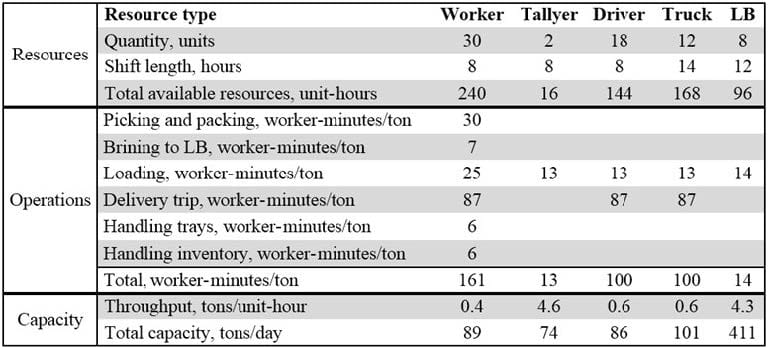CBAP Online Practice Questions and Answers
Which one of the following terms is not a business analysis planning and monitoring approach?
A. Structured walkthroughs
B. Decision analysis
C. Requirements elicitation
D. Process modeling
A national branch of a global company is struggling to improve business processes of its Public and Government Affairs (PGA) department. To work with external stakeholders effectively, PGA employees need to collect, manage, and exchange a vast amount of information. Complex cases involve collaboration of many employees from different departments. The ability to share information and to coordinate corresponding activities is crucial for the company's growth plans. Their current tools and practices do not serve the purpose well. The existing system, which was deployed a couple of years ago, has only a few active users. The majority of PGA employees avoid using it because the system is hard to use and lacks needed functionality. Consequently, available information is mostly unstructured and stored either locally or on a shared network drive. Some of the information exists only in a paper form.
The branch's PGA head, who sponsors the project, wants to implement a configurable solution that two other branches successfully deployed several months ago. Both deployments were done by three solution consultants, who will be available to assist in the project. They will be responsible for tailoring the solution to PGA needs, as well as for training the PGA staff. With their help, the sponsor plans to complete the project in approximately three months.
The solution consultants reside in another country 7 hours ahead of the rest of the project team. They will be available part-time, but are planning two one-week long trips to the PGA central office to conduct initial training and to participate in the final deployment of the system into production. The consultants, in turn, expect a business analyst (BA) to assist in collecting necessary data and defining customization requirements.
The solution consultants have composed a spreadsheet with all requirements that are already implemented in the solution. The requirements in the catalog are organized partially by user tasks and partially by system features. The branch has distinct definitions of PGA user roles and uses a different approach to structuring requirements specifications.
How should the BA organize the customization requirements?
A. Devise a structure that best fits the branch's definition of user roles
B. Explore and apply best practices for specifying this type of requirements
C. Reuse the structure of the solution consultants' requirements catalog
D. Use the structure of requirements suggested by the corporate standard
A major manufacturer of popular beverages has appointed a local distributor to serve a specific territory. The demand for the beverages has a pronounced seasonal pattern. The distributor performs well overall, but is repeatedly unable to keep up with fulfilling many customer orders during peak demand periods. The distributor's current delivery capability is stretched to deliver 60 tons of merchandise per day whereas the season's peak demand periods need a daily delivery capability of up to 100 tons.
The distributor is under pressure to fully meet the year-round market demand in order to stay in business. The distributor's management wants to identify and consider more cost-effective options as resorting to adding more trucks and drivers would not be economically feasible.
A business analyst (BA) has spent several days observing and measuring the warehouse activities to understand the situation and to gain insights into possible solutions. The delivery workflow is a four-step process: (1) picking the orders and assembling them on trays, (2) bringing the trays to the loading bay, (3) loading the orders into trucks, and (4) delivering the orders to customers. As the following table illustrates, overall performance depends is dependent on five major resources: (1) the workers who pick the orders and load them into trucks, (2) the tallyers who check the orders, (3) the drivers, (4) the trucks, and (5) eight loading bays (LBs).

What is the company's primary business objective in this scenario?
A. Make more profit
B. Defeat competitors
C. Satisfy the customer
D. Stabilize its performance
In a requirements management effort, the business analyst (BA) has reviewed all the requirements and has completed assessing the various impacts of changes to some of the requirements. The BA is planning to share the impact of the changes to all the stakeholders and obtain a consensus in resolution of some of the changes. Which technique will help the BA obtain a resolution on the impact of the requirement changes?
A. Focus groups
B. Workshops
C. Interviews
D. Surveys
A business analyst (BA) has a meeting next week with the project sponsor to ensure that the requirements align with the objective of the project. Prior to the meeting, the BA must ensure that the requirements are:
A. correct, capable, and strategic
B. parametric, analogous, and decomposed
C. atomic, feasible, and testable
D. predictive, diagnostic and descriptive
Which of the following is not a hygiene agent according to Frederick Herzberg theory?
A. The chance to excel
B. Job security
C. A paycheck
D. Clean and safe working conditions
Mary is the business analyst for your organization. She asks you what the purpose of the assess capability gaps task is.
Which of the following is the best response to give Mary?
A. It identifies new capabilities required by the organization to meet the business need.
B. It identifies the causal factors that are contributing to an effect the solution will solve.
C. It describes the ends that the organization wants to improve.
D. It identifies the skill gaps in the existing resources.
Which of the following tasks does not rely on other activities, and no other activities rely on this task completing?
A. Analysis task
B. Independent task
C. Predecessor task
D. Dependent task
